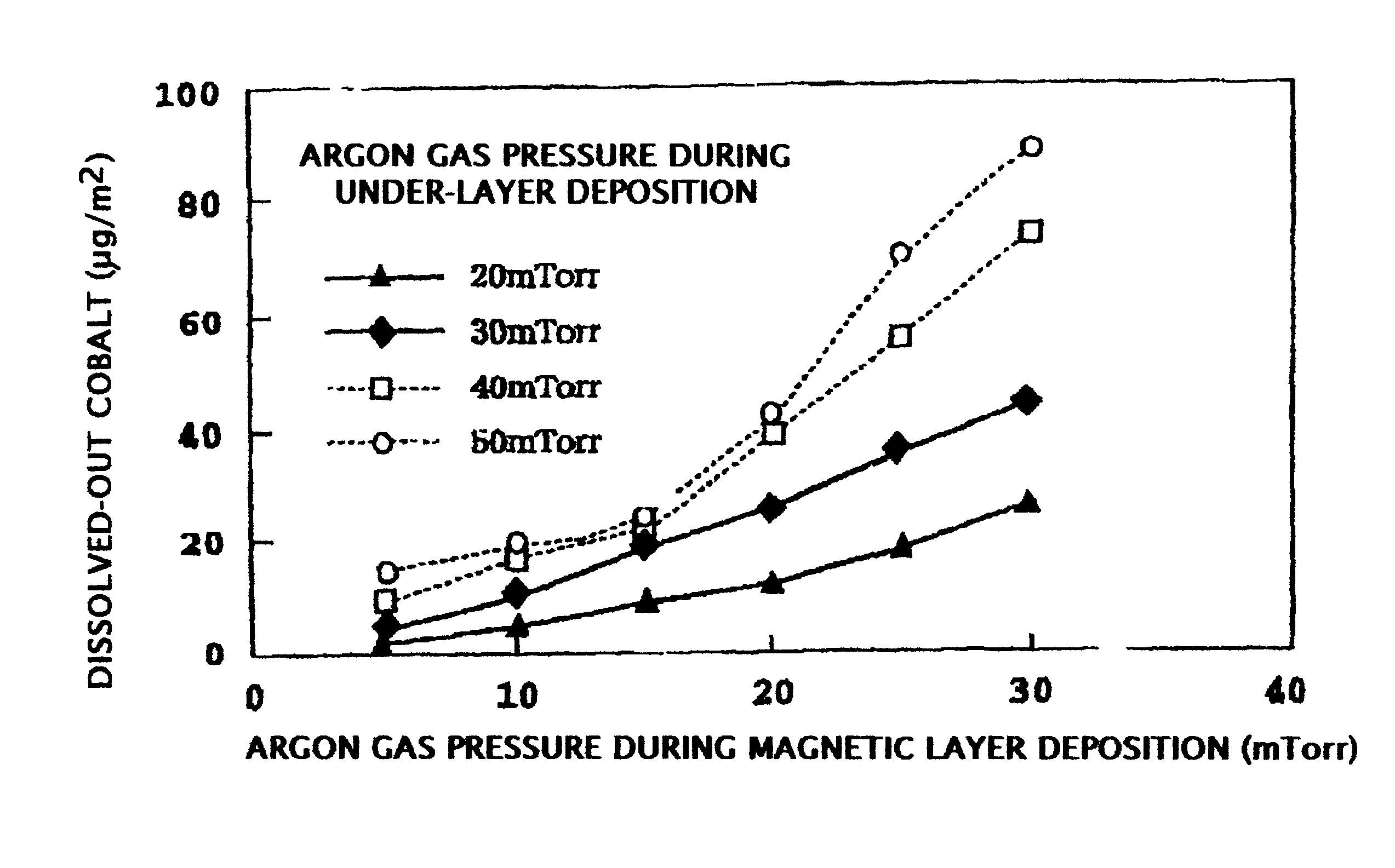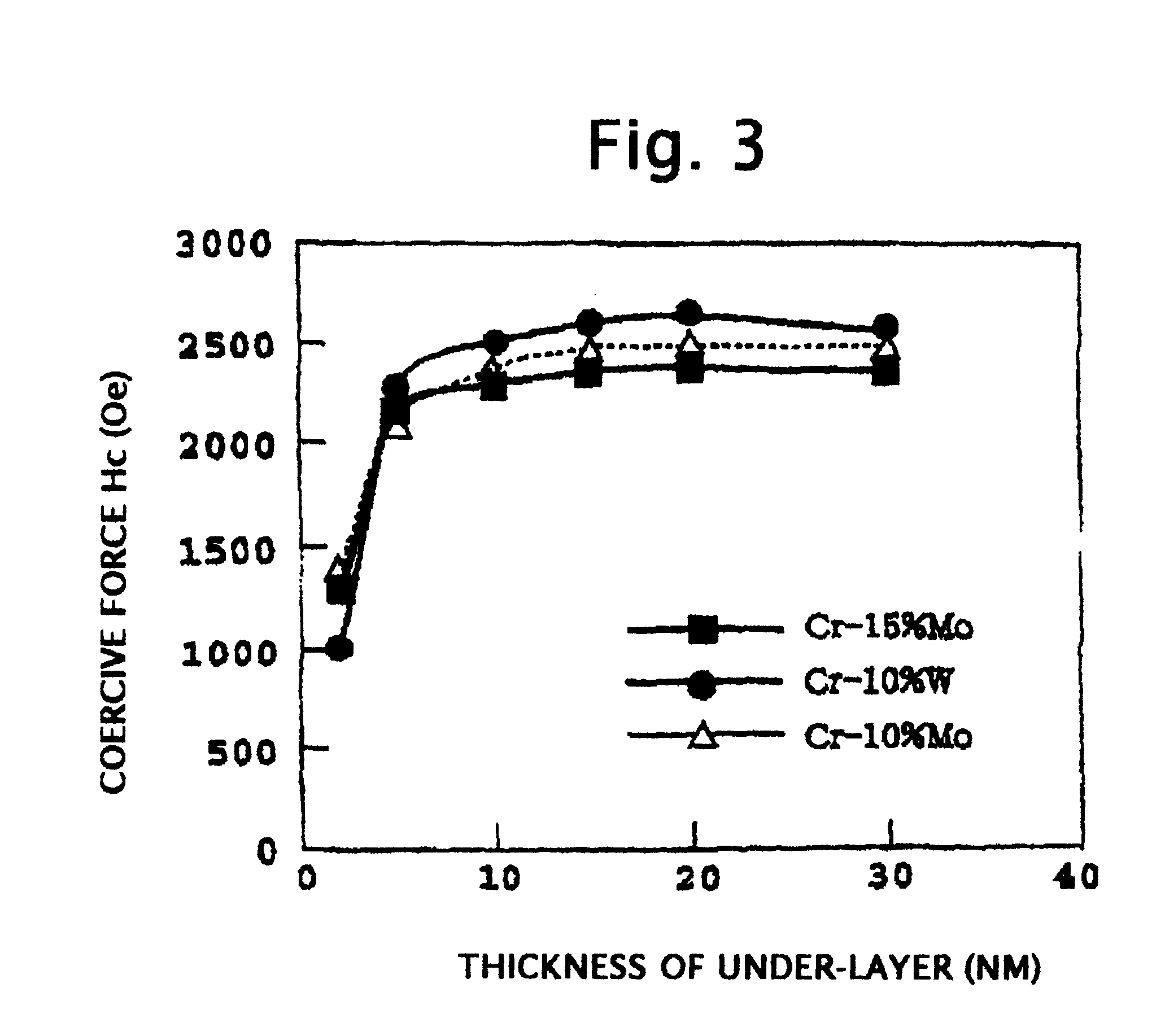Magnetic recording medium and manufacturing method for the same
a technology of magnetic recording medium and manufacturing method, which is applied in the field of magnetic recording medium, can solve the problems of deteriorating the resistance of the medium to friction and wear, and achieve the effect of excellent magnetic property, superior durability and electromagnetic transformation characteristi
- Summary
- Abstract
- Description
- Claims
- Application Information
AI Technical Summary
Benefits of technology
Problems solved by technology
Method used
Image
Examples
example 2
A series of magnetic recording media having the basic structure of FIG. 1 comprising under-layers composed of Cr-15 at % Nb, Cr-15 at % Mo, and Cr-10 at % W were fabricated. The thickness of the under-layer of each of the compositions was varied in the range from 2 nm to 30 nm. The sputtering process for depositing the under-layer was conducted under an argon gas pressure of 25 mTorr. Other materials and processes were the same as in Example 1.
Measurement of the quantity of dissolved-out cobalt was made in the same way as in Example 1 for each of the obtained media after exposure to a high temperature and humidity environment of 85.degree. C. and 80% relative humidity for 96 hours. The results are shown in FIG. 2.
Measurement of coercive force Hc was made for each of the obtained media by means of VSM (vibrating sample magnetometer). The results are shown in FIG. 3.
example 3
A series of magnetic recording media having the basic structure of FIG. 1 and comprising the under-layer of Cr-15 at % Mo having thickness of 15 nm were fabricated in the same manner as in Example 1 except that the argon gas pressure in the process for depositing the under-layer was varied in the range from 20 mTorr to 50 mTorr, and in the process for depositing the magnetic layer in the range from 5 mTorr to 30 mTorr.
Measurement of the quantity of dissolved-out cobalt was made in the same way as in Example 1 for each of the obtained media after exposure to a high temperature and humidity environment of 85.degree. C. and 80% relative humidity for 96 hours. The results are shown in FIG. 4.
As shown in FIG. 4, the quantity of dissolved-out cobalt strongly depends on the argon gas pressure during the processes for depositing the under-layer and the magnetic layer. That is, the quantity of dissolved-out cobalt increases rapidly with increases in the argon gas pressure during the depositi...
PUM
| Property | Measurement | Unit |
|---|---|---|
| thickness | aaaaa | aaaaa |
| gas pressure | aaaaa | aaaaa |
| gas pressure | aaaaa | aaaaa |
Abstract
Description
Claims
Application Information
 Login to View More
Login to View More - R&D
- Intellectual Property
- Life Sciences
- Materials
- Tech Scout
- Unparalleled Data Quality
- Higher Quality Content
- 60% Fewer Hallucinations
Browse by: Latest US Patents, China's latest patents, Technical Efficacy Thesaurus, Application Domain, Technology Topic, Popular Technical Reports.
© 2025 PatSnap. All rights reserved.Legal|Privacy policy|Modern Slavery Act Transparency Statement|Sitemap|About US| Contact US: help@patsnap.com



